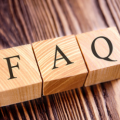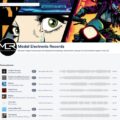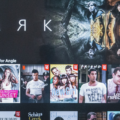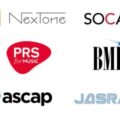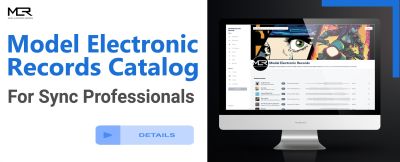We explain the basics of music licensing here, especially focusing on the cases of licensing music internationally by straddling Japan and the other countries. If you’re already familiar with standard music licensing (which is regarded as such in the US), it shouldn’t be so difficult to understand what is explained here. Having said that, many of you might not have experience in using a song or a piece of music administrated by JASRAC (Japanese copyright organization we affiliate with) for your media project. Hopefully, this guide will help you check your situation and get to use our music appropriately.
When it comes to obtaining a license to use a specific song from our catalog, please refer to the tutorial “How to Obtain a License to Use Our Music.” If you would like to use our music in Japan, please refer to the Japanese guide page.
(Updated) On a domestic basis, Tatsuya’s self-published songs’ affiliation (PRO) has been shifted from JASRAC to NexTone since April 2024. If you are considering using Tatsuya’s self-published songs in Japan, please refer to the NexTone database for details.
NexTone Database (Japanese only)
NexTone Inc. website (English)
JASRAC remains in charge of international operations for those songs. Also, some of Tatsuya’s songs that were originally published by other publishers remain affiliated with JASRAC. So, if you are interested in using Tatsuya’s songs outside Japan, please get in touch with us or ask PROs in your country (including JASRAC).
JASRAC Song Database(J-WID)
JASRAC contact form
Synchronization Uses
Usage: Using a pre-recorded song or another pre-recorded piece of music in synchronization with visual elements for your media project such as below.
Media Types
Films
TV Programming (Shows, Documentaries, Dramas, News, etc.)
TV Advertising Campaigns (Commercials)
Film Trailers & TV Promos
Corporate Productions (Theater, Competition Video/Slide, etc.)
Video Games and Software
Internet Websites, Webisodes, Flash
Radio Programming and Advertising Campaigns (Commercials)
Products and Toys
Video Packages (Music for Video, DVD or CD-ROM)
Regarding the uses above, you are required to obtain at least both a Synchronization License and a Master Use License. While we tend to lump this set of licenses together as a “Sync License,” originally these two licenses should be regarded and handled separately.
Synchronization License
This is the right to synchronize a song or a piece of music with your visual image or movie. It must be obtained (directly, in most cases) from the copyright owner of the music, which is usually the publisher.
Master Use License
This is the right to use a specific recording of a song for your media project. You have to clear this right with the record label who owns the specific recording you would like to use.
So if you would like to use a pre-recorded song or another pre-recorded piece of music for your media project, you need to talk to both the publisher and the record label. Some independent labels (like us) own or can handle both rights. That’s why they can do “one-stop licensing.”
Process of the Licensing Deal
When we receive an offer to use our music, we check the details of your project and production carefully and consider if we can grant the licenses to you. When it comes to the license fees, we (Licensor) ask you (Licensee) for ,both a Synchronization License Fee and a Master Use License Fee. And they should be paid together at one time BEFORE the actual use. These fees are calculated along with how and how much the song would be used.
If you would like to use our music for some public performances such as TV programs and TV advertising campaigns, you will also need to consider Performance Royalties. Performance Royalties are paid by broadcasters and other music users such as advertisers, to the Performance Royalty Organization (PRO), NOT to us. The amount is calculated along with the public performance report (what is called “Cue Sheet”) you submit to the organization. We receive the royalties via the organization long after they deduct their administrative fee from the gross amount you paid.
Most PROs are in alliance with JASRAC as seen in “How to Deal with PRO” page. Please check how the organizations in your country work to use our music properly.
Also, if you additionally consider releasing a soundtrack CD/DVD including our music, you are also required to obtain a Mechanical License, which we explain later.
At any rate, please describe your project as closely as possible when you fill out License Form. We would be pleased to discuss your licensing situation.
Note
If you want to cover & record a song written by others and synchronize your original recording for your media project, you will not need to talk to a specific record label. You still need, however, to obtain both a Sync License and a Mechanical License from the publisher of the song. We don’t get into this case here, so please refer to other articles such as this.
“The Ins and Outs of Licensing Recordings and Cover Songs on YouTube” (Sonicscoop)
References from JASRAC FAQ
How do I obtain permission to use Japanese music in other countries?
How can I use a Japanese song in a film?
Other References
“What is a Sync License?” (The Balance)
“Music Publishing Royalties Explained: What is a Performance Royalty?” (CD Baby)
If you’re interested in what SoundExchange does and how they differ from the other PROs, this article will be helpful.
“What’s the difference between ASCAP, BMI, SESAC, and SoundExchange?” (CD Baby)
Non-synchronization Uses
Usage: Using a specific recording of a song or a piece of music with no use of visual synchronization, i.e. using the audio master alone for your media project such as below.
Media Types
Radio Programming and Advertising Campaigns (Commercials)
Audio Projects
Music Compilation (CD, PC Audio)
Public Space (Live Events, Restaurants, Trade Shows, Retail Spaces)
Ringtones (Master/Pre-Recorded Ringtones)
For these cases, you’re usually required to obtain both a Mechanical License and a Master Use License unless you just would like to cover our music or make MIDI files for Phonic Ringtones (, which are sometimes called Composition Licenses). On top of that, if your usage includes some public performances such as radio commercials and public events, you will also need to consider Performance Royalties.
“A mechanical license grants the rights to reproduce and distribute copyrighted musical compositions (songs) on CDs, records, tapes, ringtones, permanent digital downloads, interactive streams and other digital configurations supporting various business models, including locker-based music services and bundled music offerings.” (from the Harry Fox Agency website)
Process of the Licensing Deal
When we receive an offer to use our music, we check the situation of your project & production carefully and consider if we can grant the licenses to you. When it comes to the license fees, we (Licensor) ask you (Licensee) for both a Master Use License Fee and Mechanical Royalties. However, unlike synchronization use, these fees & royalties can NOT be paid directly to us.
When it comes to a Master License Fee, you (Licensee) may pay it to us (Licensor) directly. The amount is calculated along with how and how much the song is used. Sometimes it’s paid as a one-shot fee, and sometimes it’s paid as royalties that are proportional to the amount of the sales or copies of your product.
Speaking of Mechanical Royalties, JASRAC is one of the rare organizations which handle Mechanical Rights along with Performance Rights and collect both royalties. This situation is totally different from that of the PROs in the US such as ASCAP and BMI. (In the US, while Mechanical Royalties are often paid directly to the publisher, they are sometimes paid through collection services of a mechanical rights agency, such as the Harry Fox Agency.)
If there is a copyright organization in your country which handles Mechanical Rights and is in alliance with JASRAC, you can talk to them and discuss the Mechanical Royalties you would pay. If there’s no appropriate organization in your country, you will need to talk and pay the Mechanical Royalties directly to us.
Please check your situation at “How to Deal with PRO” page. Incidentally (and fortunately), JASRAC is in alliance with the Harry Fox Agency (HFA) as well as ASCAP, BMI, and SESAC.
References
“Understanding Mechanical Royalties” (BMI)
“How to Obtain Mechanical Licenses” (Harry Fox Agency)
“Music Publishing Royalties Explained: What is a Mechanical Royalty?” (CD Baby)
If you’re interested in what it takes to be able to play pre-recorded music in your restaurant, this FAQ will be helpful.
“11 questions about music licensing” (National Restaurant Association)
Other Uses
Sampling, Remixes, and Derivative Works
(that use a specific recording of a pre-released song)
While these uses could be included in B. Non-synchronization uses (where you need both a Mechanical License and a Master Use License), you will have to be more careful than the other uses. If you would like to “sample” a specific recording of a pre-released song for your composition, it should be more complicated and take more time to obtain the necessary multiple licenses from the rights holders. Not every rights holder might give you permission to use their music. We don’t go into the depth here, but hopefully, these references will be handy for you.
To avoid the complexity and possible troubles, we basically don’t permit other artists to sample our master recordings for their new works (unless they work with experienced A&Rs and attorneys that can address the legal process and payment responsibly). This includes derivative works/acts such as singing or rapping a new song on any part of our masters, of course.
Please understand it and look for other easy-to-clear sampling sources.
References
“How You Can Clear Cover Songs, Samples, and Handle Public Domain Works” (ASCAP)
“When You Need Permission to Sample Others’ Music” (Nolo)
Covers, Phonic (MIDI) Ringtones
If you would like to cover a song written by others, you will need to obtain a Mechanical License unless it’s a public domain song. As for how to obtain a Mechanical License, please refer to the description in B.
Ringtones have two basic types: Phonic Ringtones and Master/Pre-Recorded Ringtones. Whereas most Phonic Ringtones consists of standard MIDI sound files, Master/Pre-Recorded Ringtones play actual clips from sound recordings, i.e. literally using the audio master of a specific recording of a pre-released song. The difference between these Ringtones in terms of licensing is that Master Ringtones need a Master Use License. Of course, both Ringtones need a Mechanical License. As for a Master Use License, please refer to the description in A.
Whatever you would like to use our music for, please let us know your situation as closely as possible via License Form.
Karaoke
As you may know, Karaoke business in Japan has already been established and stood the test of time. The music licensing system for the domestic Karaoke services has been well-organized. If you visit their “Music Users” page, you will be able to understand how it works clearly. Of course, it only applies to when you would like to use the song in Japan, not in other countries.
Situations around music licensing for Karaoke in the US and other countries are so different that we cannot generalize how to proceed in your country. We would recommend that you ask PROs or copyright experts in your country before contacting us. Incidentally, the Harry Fox Agency’s Mechanical License does NOT cover any use of the song or lyrics in karaoke or “CD+G” product.
References
“4 Tips on Getting a Mechanical License for a Cover Song” (Bandzoogle)
“What is HFA’s Ringtone Licensing Process?” (Harry Fox Agency)
“Karaoke Brings Customers and Copyright Concerns to Business Owners Seeking to Boost Profits” (BMI)
“Why Copyright Law Is Crippling American Karaoke Companies…” (Digital Music News)
“Does an HFA mechanical license cover karaoke or “CD+G” product?” (Harry Fox Agency –License FAQ-)
Sheet Music
While JASRAC handles music licensing for print sheet music (as long as it is published in Japan), few organizations in other countries handle it. If you would like to obtain a license to use our music for your sheet music project, you will need to contact us directly via Contact Form.
Addendum:
When it comes to what Synchronization Rights mean and cover, there are some significant differences between Japan and the other countries. We don’t believe there will be any big issues with actual international sync license deals straddling Japan and the other countries, we would recommend you take a look at Tatsuya’s blog articles below.
Differences in Sync Licensing between Japan and the US -Part 1-
Differences in Sync Licensing between Japan and the US -Part 2-



